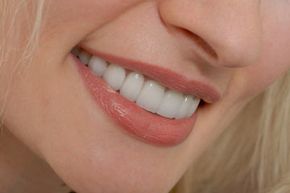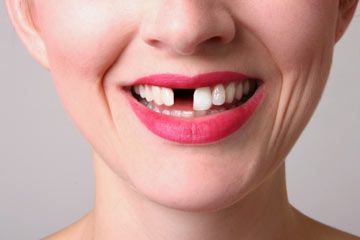Just as you can put new siding on your house to mask a chipped or fading paint job, you can cover up imperfections on your teeth with the help of dental veneers. Also known as dental porcelain laminates, veneers are "false fronts" that are cemented onto your natural teeth to improve their shape and appearance. Veneers give the impression of the wearer having a flawless, bright smile.
Despite the fact that they're only about a half-millimeter thick, veneers can accomplish quite a lot when it comes to fixing your smile [source: Smith]. People often get them with one or more of the following goals in mind:
Advertisement
- fixing teeth that are mottled or stained from use of fluoride or drugs such as tetracycline
- covering up chips in teeth
- correcting the appearance and bite of crooked teeth
- filling in gaps between teeth
Veneers are often made from porcelain or resin composite materials. Both materials have advantages. Veneers made of porcelain look more natural than those made of resin composite materials. Resin veneers, on the other hand, are thinner and require less shaving of the enamel before they're affixed to teeth, but they're also more susceptible to staining [source: Williams].
Veneers are generally used to re-face the front eight upper teeth. Since the reasons for getting veneers are largely cosmetic, there's usually no need to have them on teeth that aren't commonly seen when you smile or talk.
While veneers are a good option cosmetically, they're not cheap: They cost anywhere from $800 to $1,300 -- per tooth [source: Cleveland Clinic]. And again, since getting them is a cosmetic procedure, you'll likely have to pay the full cost out of pocket.
The process of getting veneers is a little more involved than a bonding procedure (during which a dentist can reshape a tooth using composite resin bonding), but less complicated than getting a crown.
Start to finish, it generally takes three visits to the dentist to get veneers [source: Mitchell]. The first visit is a consultation visit. That's the time to ask any questions you may have about the process. Make sure your dentist is skilled and experienced in this procedure. You can ask to see before-and-after photos of your dentist's previous veneer recipient patients, and to be put in contact with them -- especially if you're getting several veneers.
Next, we'll talk about the most involved part of the process -- the second visit -- and whether or not your pricey veneers will last a lifetime.
Advertisement



